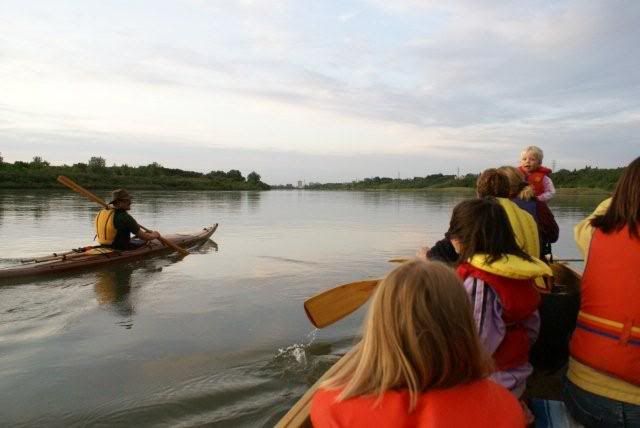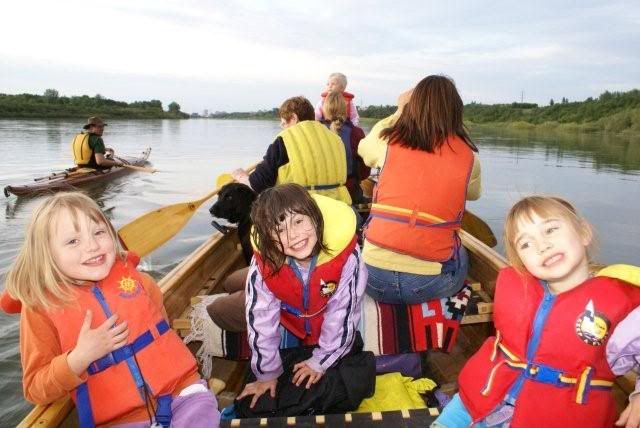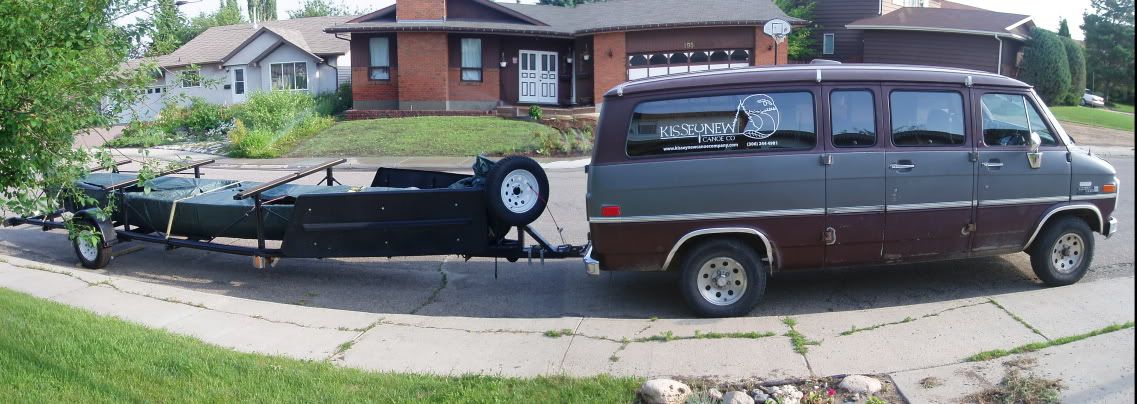 Image: Eames Office WebsiteEames Office website
Image: Eames Office WebsiteEames Office website is a useful link for Indian design and designers since it holds the
Eames Legacy which has had a major impact on the shaping of modern design education and practice in India over the past 50 years. From the establishment of the National Institute of Design in Ahmedabad through the legendary
India Report of 1958 (pdf file 359 kb) drafted by the Charles and Ray Eames at the behest of the first Prime Minister of India, Jawaharlal Nehru, to the setting up of the permanent Nehru Exhibits first at New Delhi’s Pragati Maidan and then at Mumbai’s Nehru Centre at Worli in 1998 gave NID and its designers a direct access to the insights of that Eamses had gleaned in their prolific explorations into many dimensions of design. We will soon embark on the celebration of 50 years of Indian Design and this will be in part a celebration of the contribution of the Eamses as well as the dedication and sustained efforts of the pioneers of Indian design from the
National Institute of Design in Ahmedabad. Further the philosophic insights captured in the
classic diagram of the design process which can be seen here has been a source of inspiration for all those who have had contact with his work.
 Image: Nehru Exhibition opens in New York: from the NID Documentation 64-69
Image: Nehru Exhibition opens in New York: from the NID Documentation 64-69My own contact with the Eames philosophy gave me a new world view and later their practical tips on design action which focused on the minutest details in a “nothing-matters-more-than-the-details” point of view came from my association as a team member on the Nehru Exhibition on a number of occasions. As a student of Furniture Design at NID in the Post Graduate Programme that was started in 1969 we already had a head start into the Eames philosophy since we had access to a number of Eames designed furniture originals in our prototype collection which had been gifted by the
Museum of Modern Art, New York after the collection of great designs had traveled in India before finding a permanent place at NID, Ahmedabad. Analysing the Eames collection and watching the collection of
Eames films from the NID library were a great source of inspiration for many generations of NID students and faculty as well as for me as well. While this was the source of inspiration for me from 1969 to 1972 as a student at NID I got to experience another dimension of the Eames legacy in November 1972 when I had the opportunity to work as a member of the team on the Nehru Exhibition that was being set up in New Delhi in a new building that was being specially designed to house the exhibit permanently.
 Image: Nehru Exhibition: from NID Documentation 64-69
Image: Nehru Exhibition: from NID Documentation 64-69I got to know the exhibits of the Nehru exhibition like the back of my hand having spent many nights hanging around the exhibition team in the photography department, the letter press studio and the wood workshop where the various parts of the exhibit were being assembled at the NID campus in Paldi. My task was to help design an auditorium with informal seating for a proposed theatre at the exhibition that would show films about Nehru and in another room create a audio-review system that could be used to listen to the many speeches by Nehru while standing next to a set of panels that had some contextual information about each speech. While these were my specific tasks, I had hung around all the other work groups long enough to be aware of the details of all these exhibits as well in a deeply interested and informed manner, which was encouraged in those heady days of "learning by doing" at NID of the 70's and 80's. The Eames treatment of all the elements of the exhibit that was being re-interpreted by Vikas Satwalekar as the then project head was a wholesome learning experience for me. During this same period I was involved with Dashrat Patel and Sen Kapadia in another project being executed at the Pragati Maidan which was also to open in November 1972, the Our India Pavilion where my specific task was to design the ventilation system and the large circular ports that were stuck outside the building, a concept that was a visual feature of Sen’s architecture for the stark building that still stands today as Hall No 15 in the Exhibition grounds at New Delhi.
 Image: Charles Eames on his last visit to NID
Image: Charles Eames on his last visit to NIDThese two experiences brought me professionally closer to both Vikas and Dashrat. They had both worked with Eames in 1964 and they headed the respective projects at New Delhi. When the team for the Chile leg of the Nehru Exhibition was being decided through an emergency call from the Ministry of External Affairs in Delhi, I was selected to travel with Dashrat and B V Mistry to Santiago as a team member and a “crisis manager” to help set up the Nehru Exhibit in Santiago that was scheduled to open on the 26th of January 1973. Our team departed hurriedly on the 14th January 1973 along with 100 kg of excess baggage with photo prints, odds and ends, textiles and nails and adhesive, all that would be needed to set up the Nehru Exhibit in Santiago. Our task was to take the version of the exhibition that had arrived in Chile from Australia and make it ship-shape and presentable in an appropriate layout in the National Museum at Santiago. These experiences gave me a deep insight into the Eames sense of fine detailing and of their ability to handle both communication as well as material structures in one smoothly blended offering. The backs of panels were draped in fine Indian textiles as were the side structures on which the knock-down panels with large photographic exhibits were supported.
The structure itself was made stable using textile pouches that could be filled with sand locally so that a heavy base was not required to be transported across the world as the Nehru Exhibit was designed to travel to New York and later to many destinations across the globe. The system for typography and the method of building a history wall were some of the lasting contributions that many generations of NID exhibition and graphic designers perfected while working on the Nehru Exhibition with the Eames’s and their trusted colleagues who came to NID for the first such experience in the mid 60’s. Later the Eames History wall held sway on many NID exhibitions and the hierarchy of typography and the photo style and organization all had the Eames branding strongly embedded in the numerous outings and offerings from NID, be it the Agri-Expo in 1979, the Energy Exhibit in 1983 or the My Land My People in 1994, all mega exhibits handled by the NID teams following the Eames traditions. Quality was in high demand. Sensitivity was demanded from every team member and everyone contributed to the “menial tasks” of cutting and pasting hundreds of photographs and thousands of captions and labels, without a blemish, and here the learning about the finer aspects of design sensitivity were transferred from faculty to student and from carpenter to apprentice. The right-angle was the king, and the plumb-line informed the eye to see the vertical in all its perfection, the results were judged by the same standards that Eames had used for the first exhibition and the traditions of perfection were driven deep into the Indian design community at NID. The re-making of the Eames History Wall was an excellent introduction to information design and expressive visualization.
The other dimension of the
Eames contribution was the India Report itself which can be downloaded from this link here. The Lota and the message about the Indian craft and culture of innovation and how it would need to be nurtured in a rapidly changing world order were all but lost to the Indian administration who did not seem to understand the role and purpose of design or NID. However having set up the NID and let it operate away from the harsh glare of daily politics in far away Ahmedabad, Indian Design could grow quietly, mature and take roots and build a whole generation of young practitioners who are the cream of Indian design profession and academia today in almost all fields of design education and action. The Eames contribution continued with their continuing interest in the Institute that they helped create in India and Charles visited NID in 1978, a few months before he passed away, and so did Ray, who came to NID to give away the Eames Award to Kamla Devi Chattopadhya in 1988, again a few months before she too passed away on the very same day and date as Charles, 21 August 1988, exactly 10 years apart. While this is a very personal tribute to the Eames legacy in India there are many of my colleagues who have worked directly with Eames as well as in their office in Los Angles at different times of their association with NID and through the amazing process of osmosis that happens when you are in their presence a great deal of learning about design has got transferred to Indian designers which will be mapped and evaluated in the years to come, I hope. The often repeated Eames quote at NID was – “do not say I will design a chair, rather say I will design something to sit on” – and the idea of broadening ones perception and including an open interpretation of the subject and the context were messages from the Eames that reverberated at NID and informed the education culture at the Institute over the years. The classic diagram that Charles offered when asked about the nature of the design process is another fine example of insight that has shaped the NID way in shaping the individual and their character through the value systems that were cherished in the NID’s education culture through the 70’s through the 90’s.
My most recent contact with the
Eames legacy was when their grandson Eames Demetrios visited NID along with representatives of the
Herman Miller group to reestablish contact with NID and to distribute his book “An Eames Primer” which I have a signed copy on my bookshelf. Soon after this I got online and obtained for myself a full set of Eames films being offered as a DVD set of six in a box at a very affordable price, much recommended for every design student and school as a source of inspiration and sensitization to be a thinking acting designer with feeling, which for me is the key message from the Eamses, Charles and Ray, thank you.
 Image: Eames House: Modular from Industrial materials, much like the NID building system
Image: Eames House: Modular from Industrial materials, much like the NID building systemThe Eames connection continues to this day since one of my students,
Sagarika Sundaram visited the Eames House this year and brought back the pictures that I use here and I am sure the Eames inspiration will mobilise many generations of young designers to come and the Eames Office on the web will be a much sought after destination for design students in their wanderings across the vast contours of the internet.
 Image: NID building as envisaged in 1966 by the team led by Gautam and Gira Sarabhai and published in the NID Documentation 1964-69
Image: NID building as envisaged in 1966 by the team led by Gautam and Gira Sarabhai and published in the NID Documentation 1964-69NID too has now opened another chapter of the
Eames Award and Fellowship set to begin this year which can be seen at this link here.


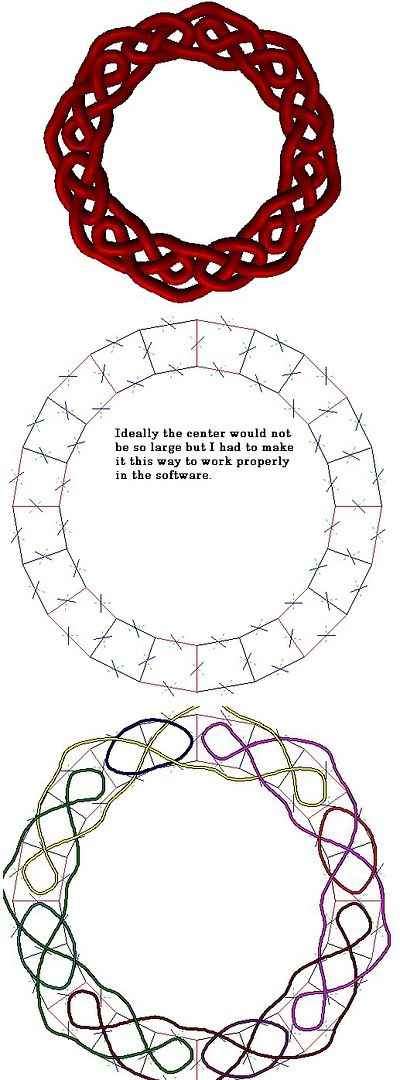
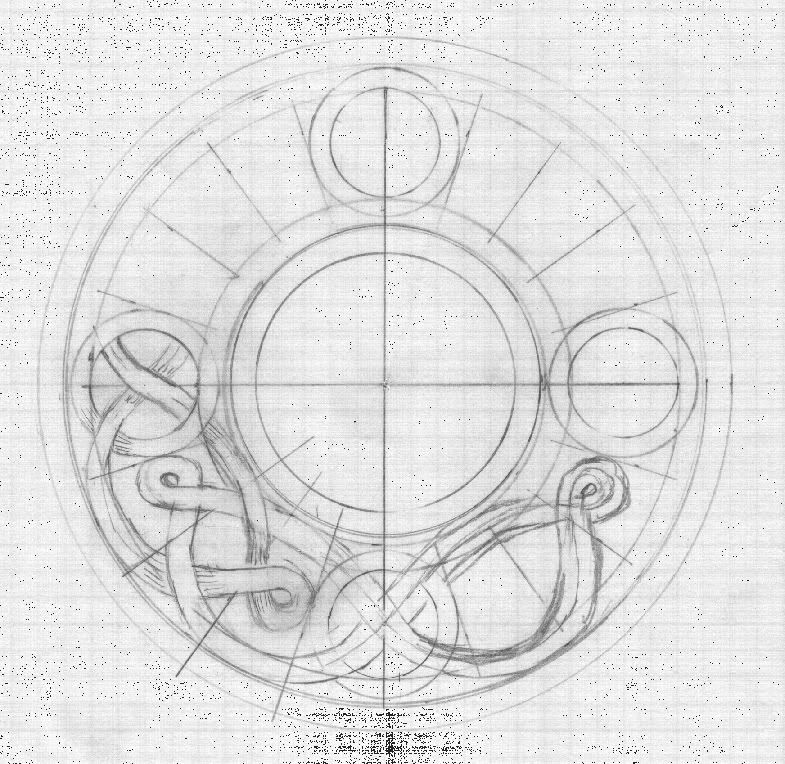
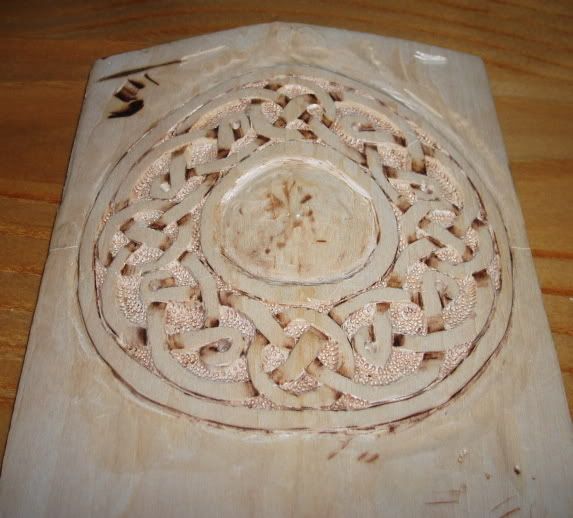
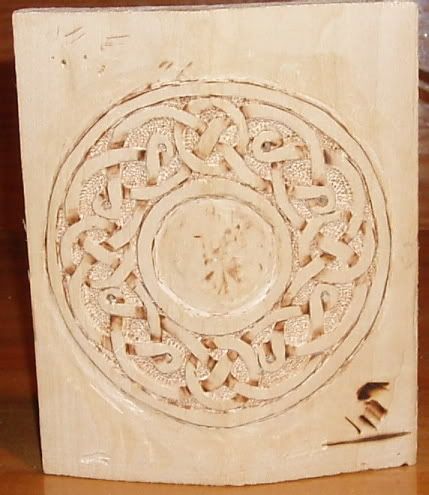 With the carving complete, I then prepared for insertion in the deck of the kayak. The bottom of the block of wood was planed down (bass is so nice to work with) until the overall thickness was just over 1/4". The carved disc was then cut from the block using a circle cutting jig on my Dremel. The center was also cut out of the carved disc (I may have used a hole saw for that one).
With the carving complete, I then prepared for insertion in the deck of the kayak. The bottom of the block of wood was planed down (bass is so nice to work with) until the overall thickness was just over 1/4". The carved disc was then cut from the block using a circle cutting jig on my Dremel. The center was also cut out of the carved disc (I may have used a hole saw for that one).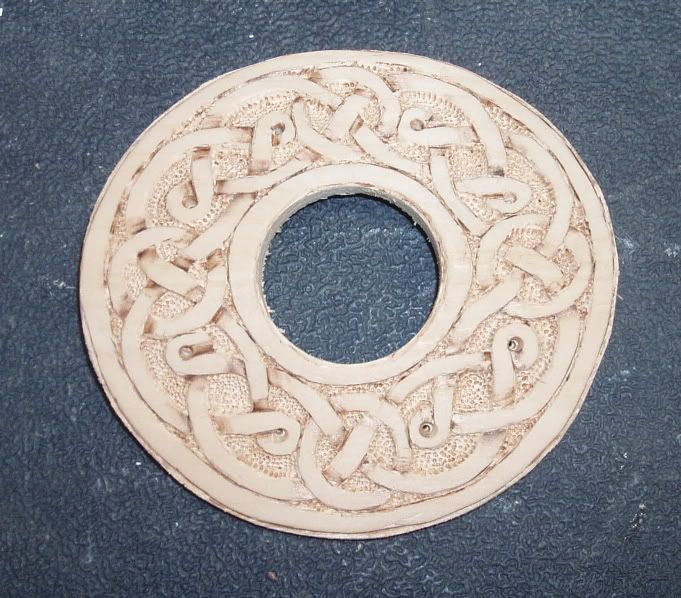 To this point, if things had not worked out or I made a major slip up, I could have started over on the carving or given up and nobody would ever have known about it. The next step required a much greater degree of commitment to proceed. I cut the matching hole in the deck of the kayak, again using the circle cutting jig on the Dremel.
To this point, if things had not worked out or I made a major slip up, I could have started over on the carving or given up and nobody would ever have known about it. The next step required a much greater degree of commitment to proceed. I cut the matching hole in the deck of the kayak, again using the circle cutting jig on the Dremel.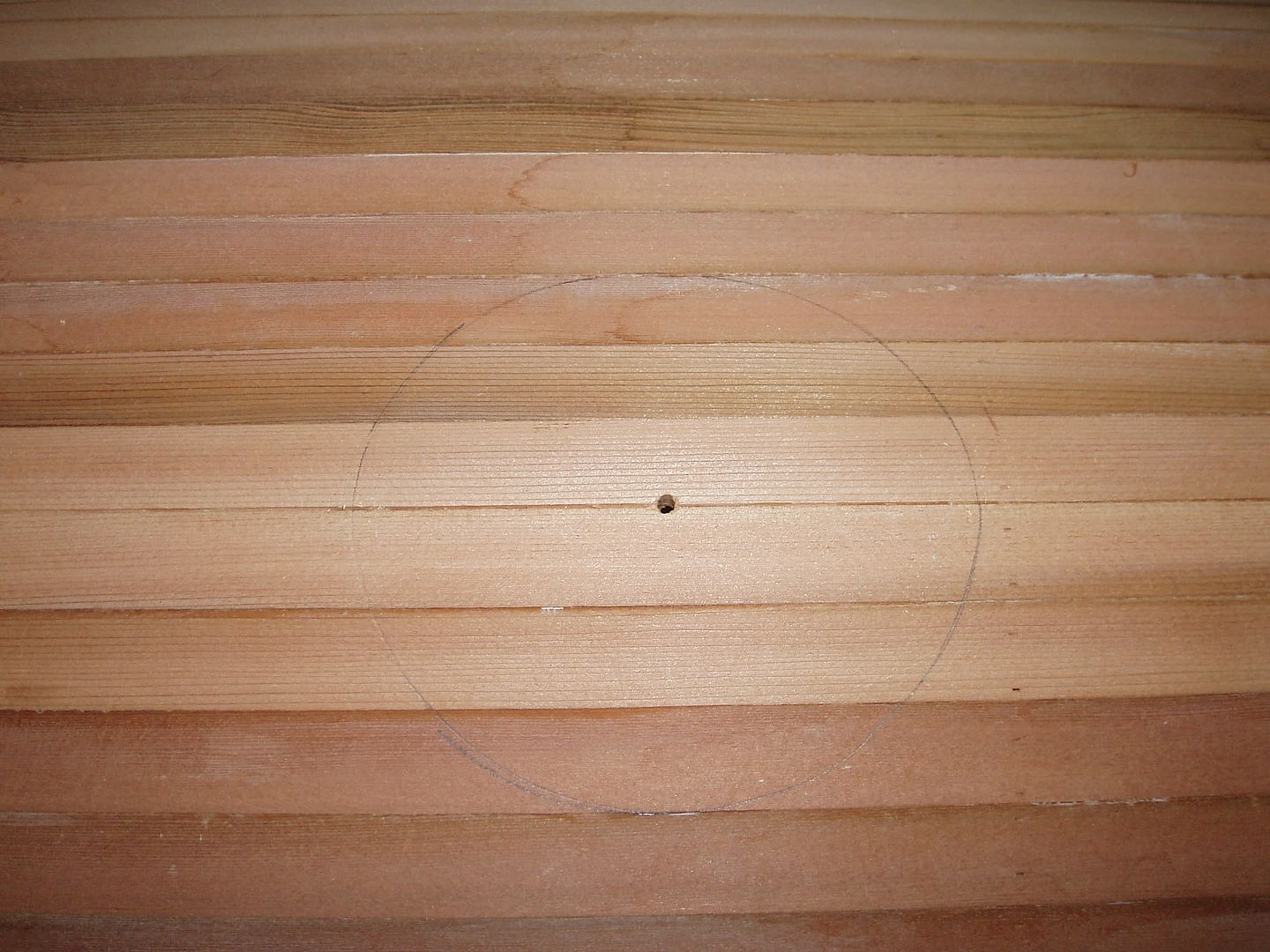
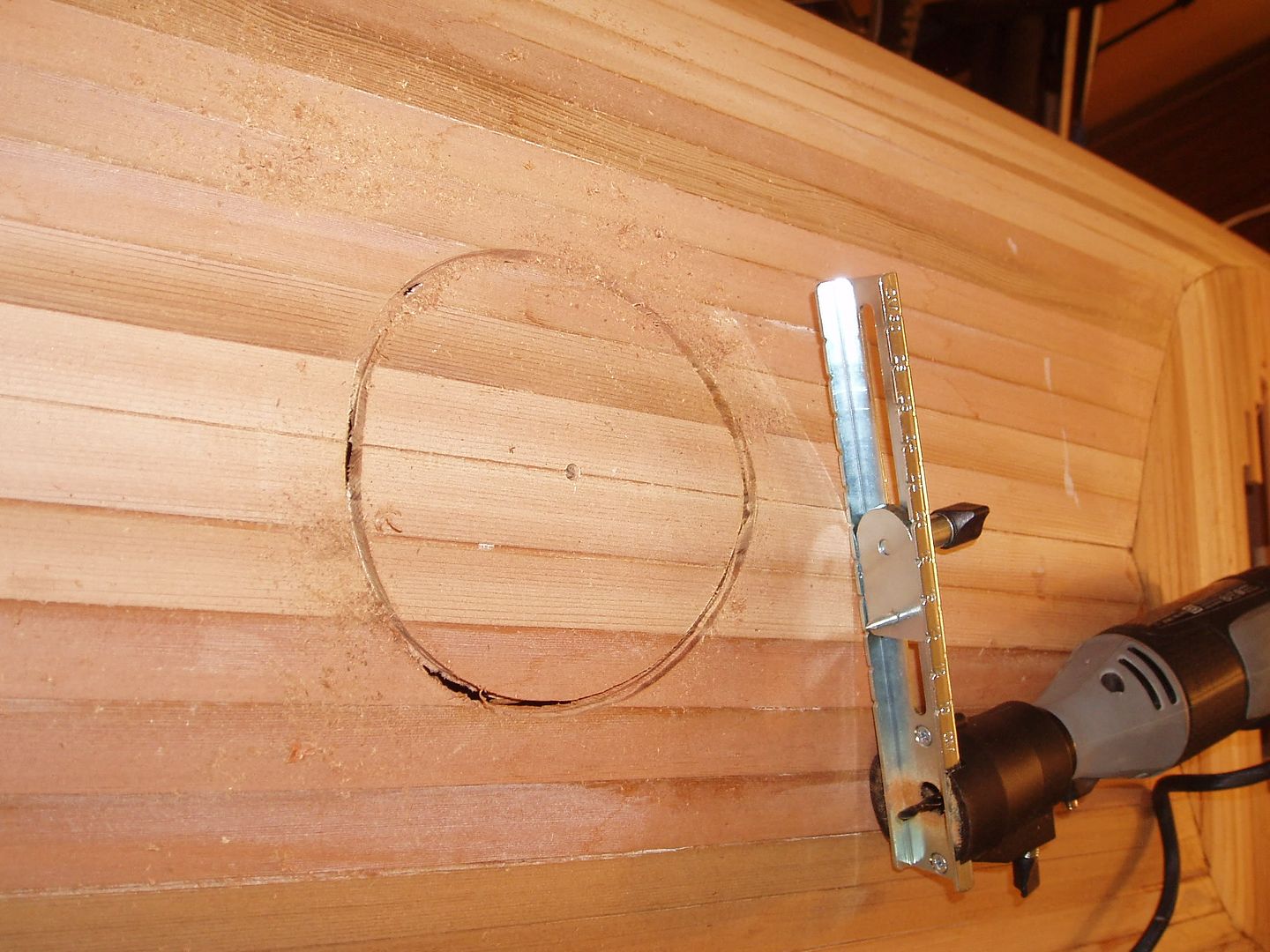
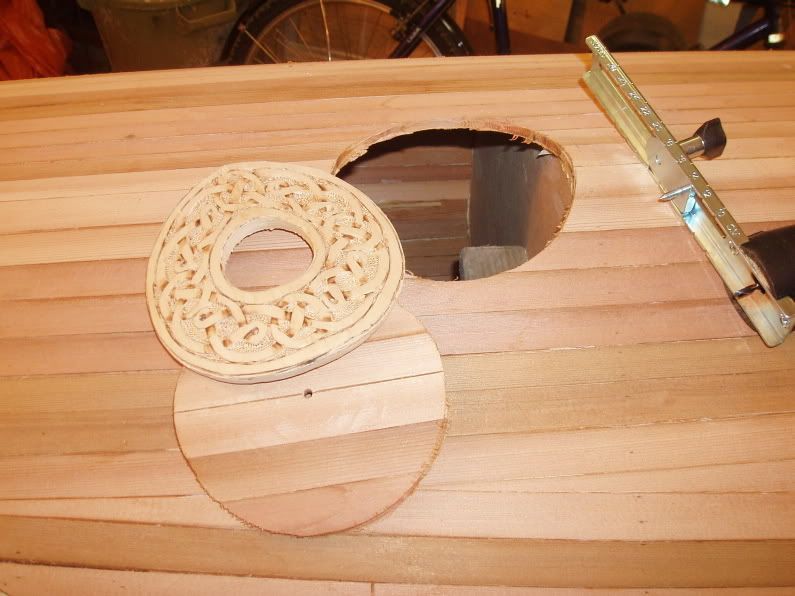
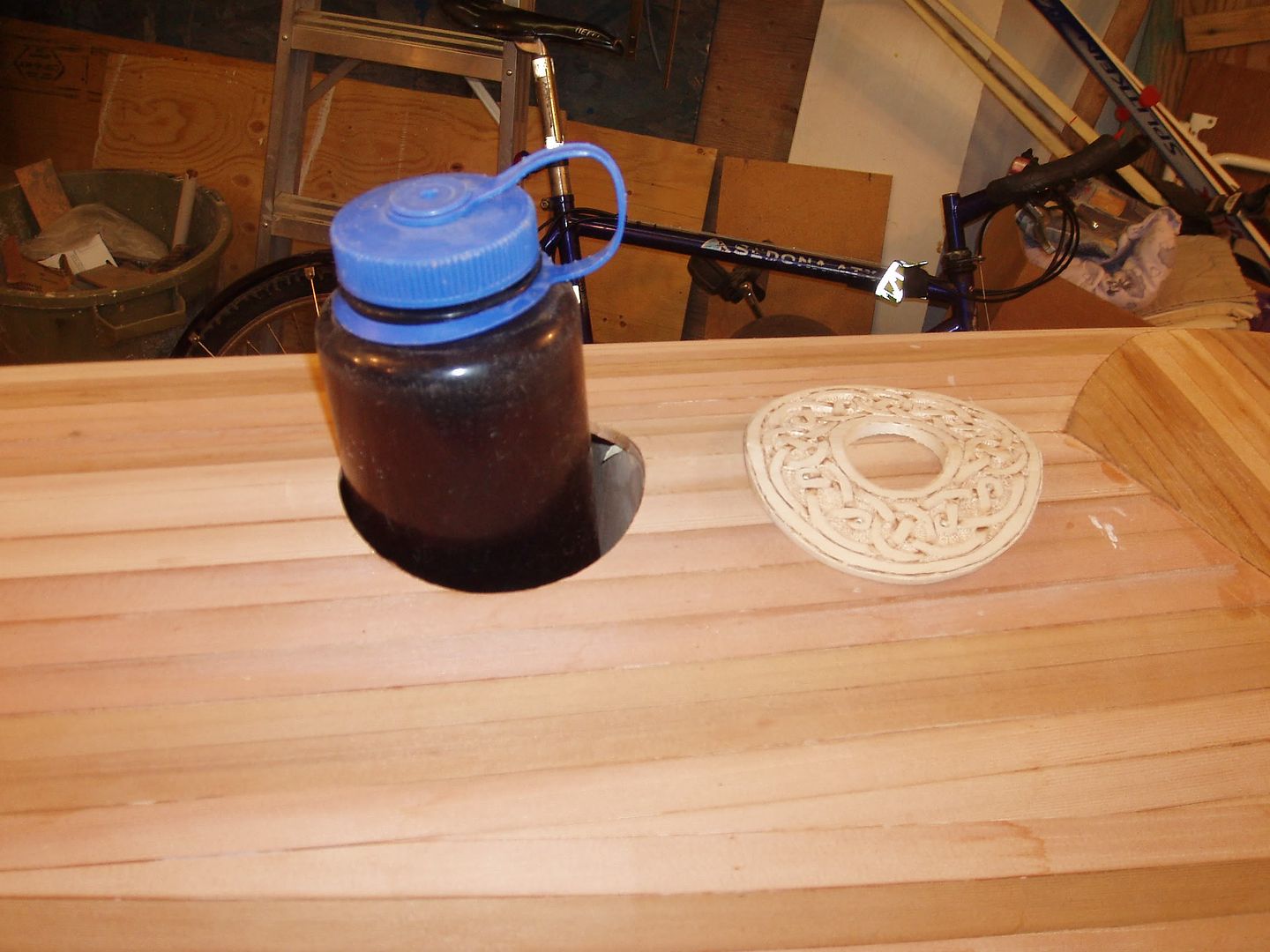 Using the jig and Dremel to cut the hole worked OK, but the resulting hole was a slight oval due to the peak of the deck.
Using the jig and Dremel to cut the hole worked OK, but the resulting hole was a slight oval due to the peak of the deck.
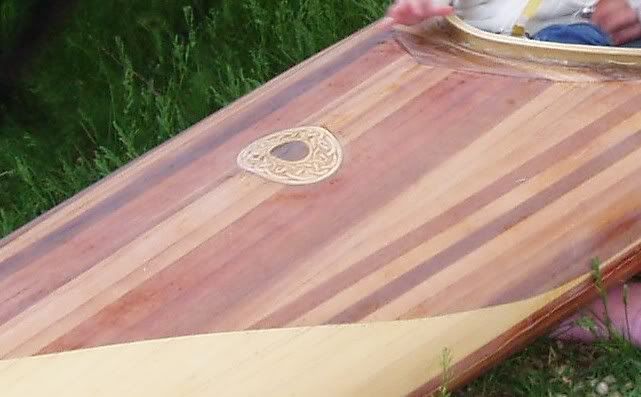 In the above photo, the carving along with the rest of the deck has been fiberglassed and the fiberglass sanded to a dull finish. The photos below were taken after another fill coat of epoxy was applied to the deck.
In the above photo, the carving along with the rest of the deck has been fiberglassed and the fiberglass sanded to a dull finish. The photos below were taken after another fill coat of epoxy was applied to the deck.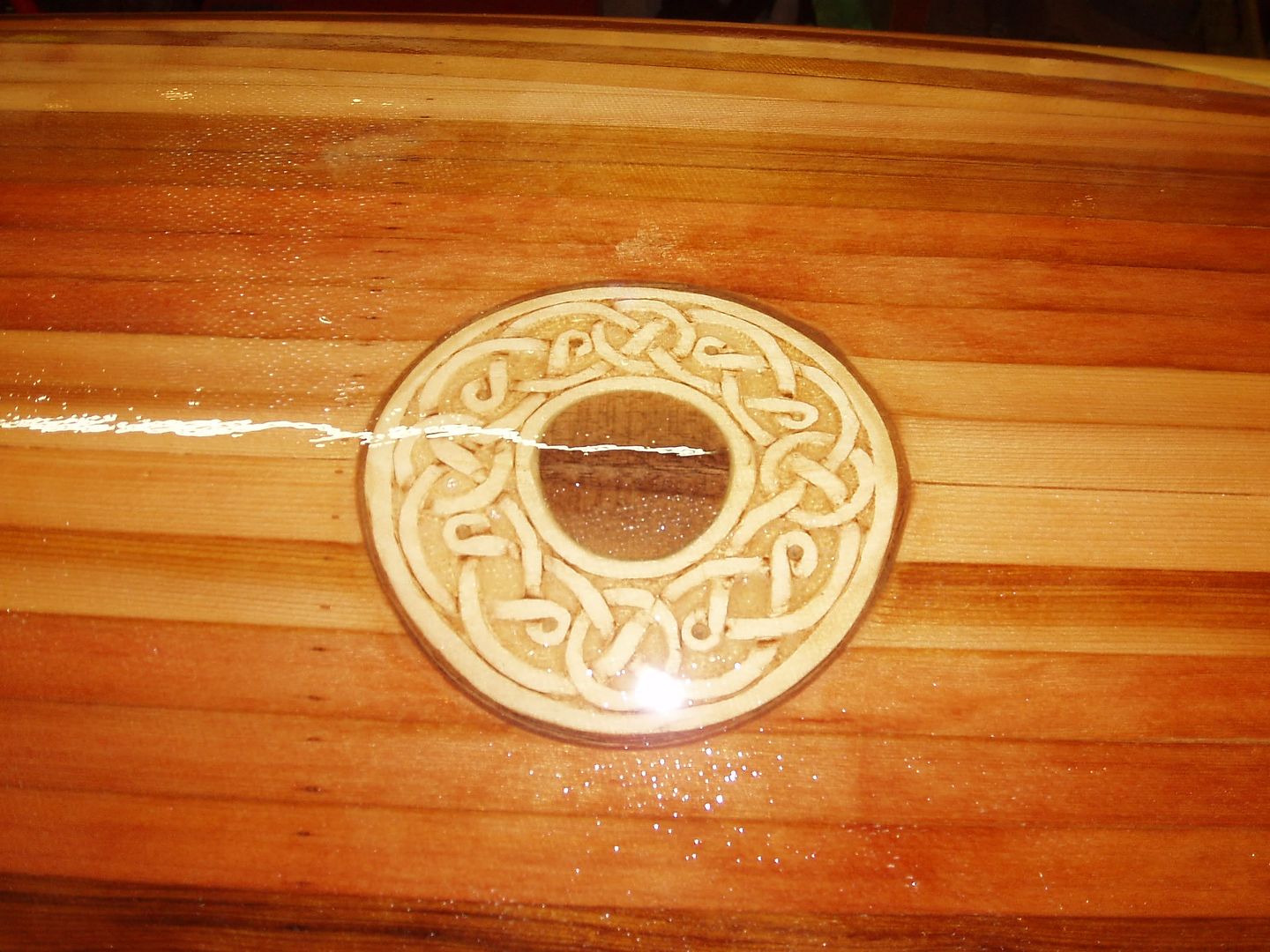
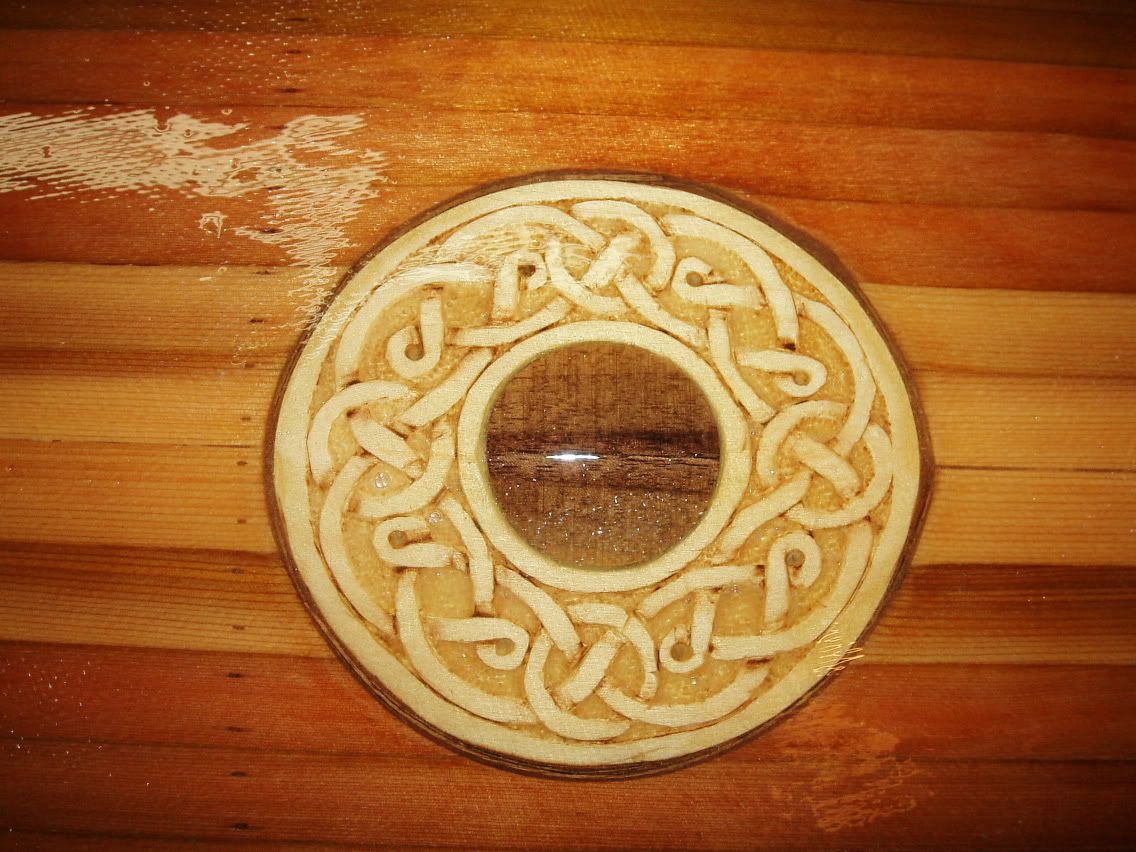

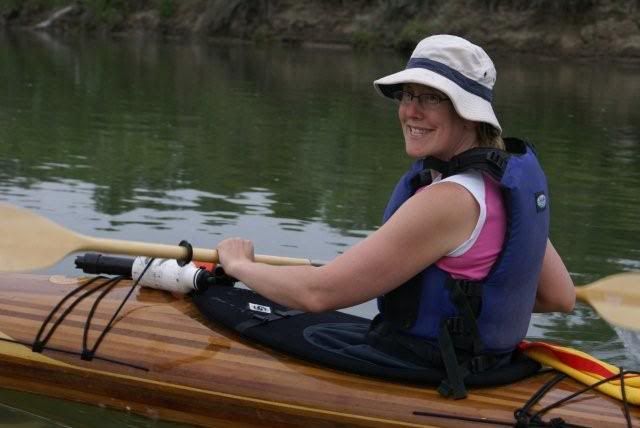







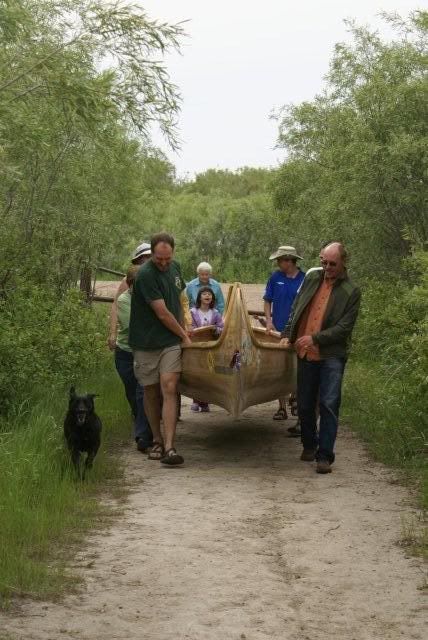
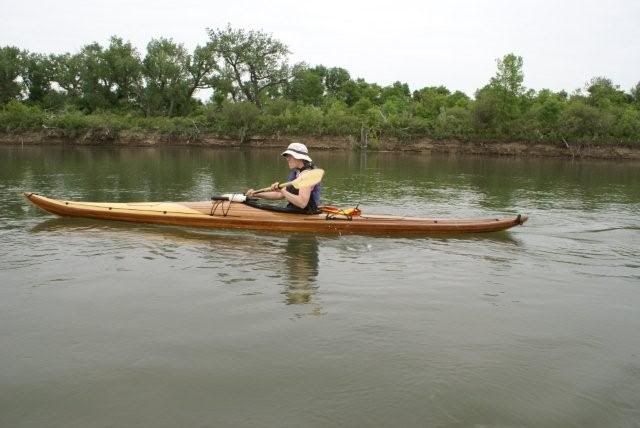
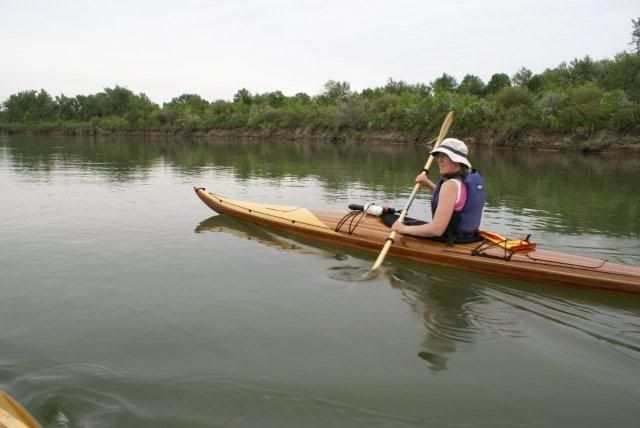


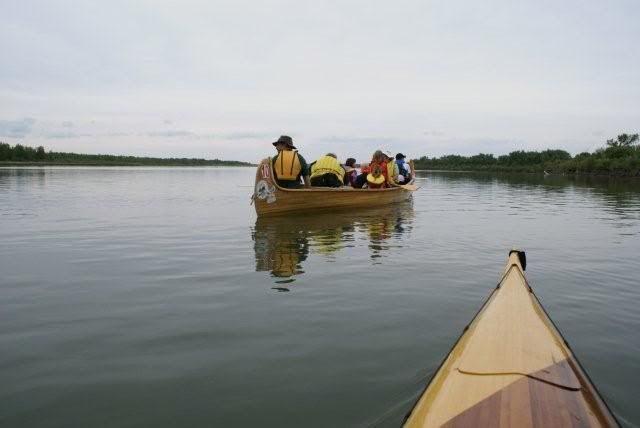


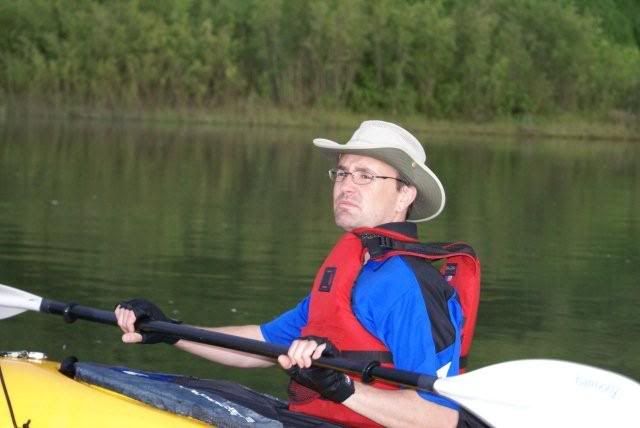
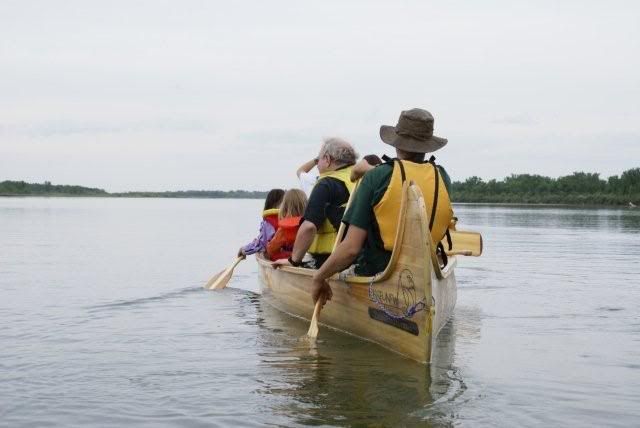
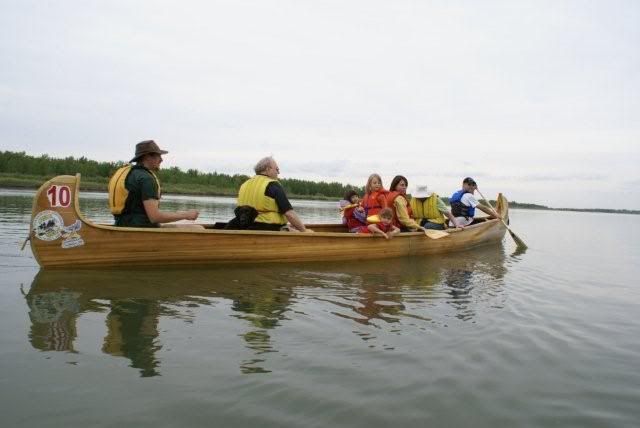
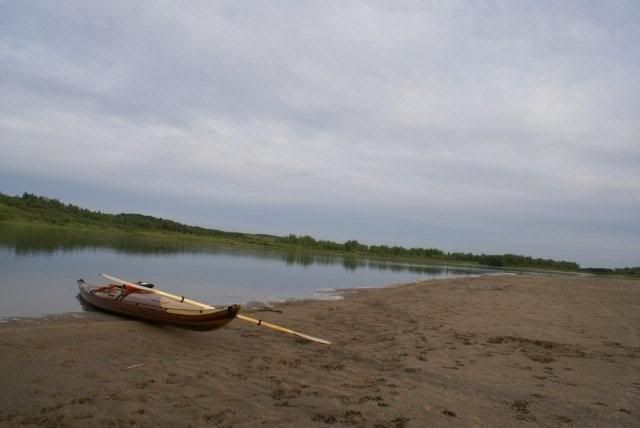



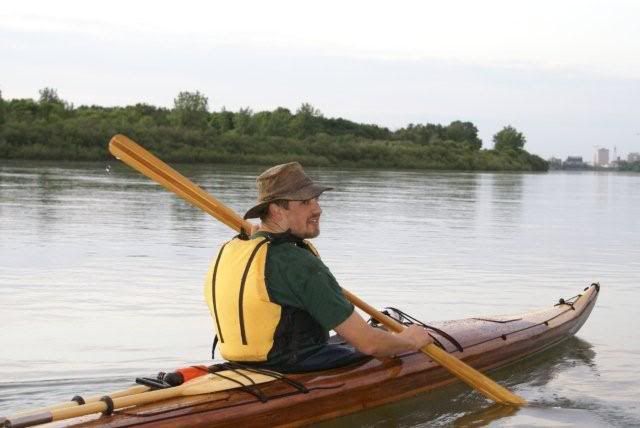 My turn.
My turn.
 Rob took over duties in the stern while I took my turn in the kayak. The
Rob took over duties in the stern while I took my turn in the kayak. The 